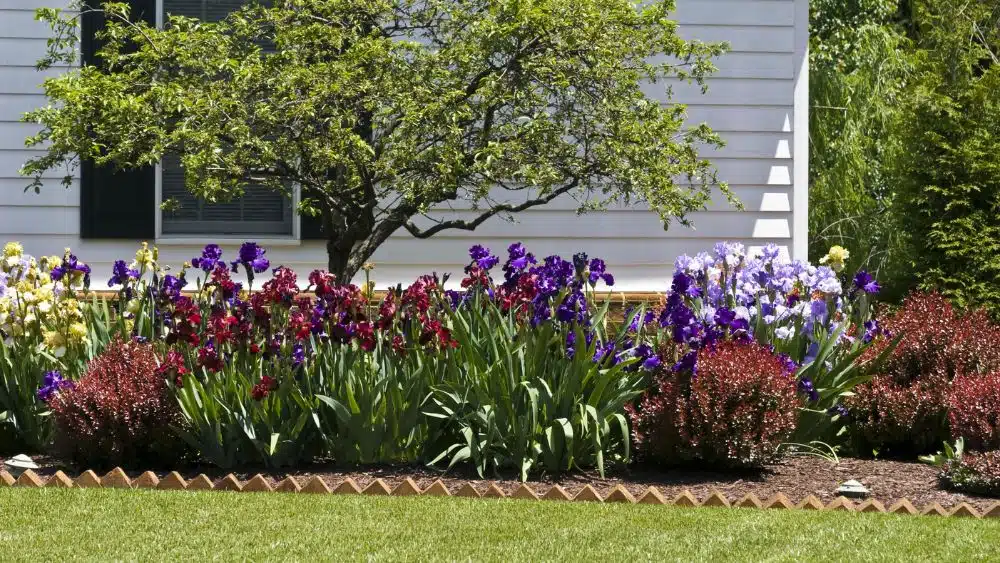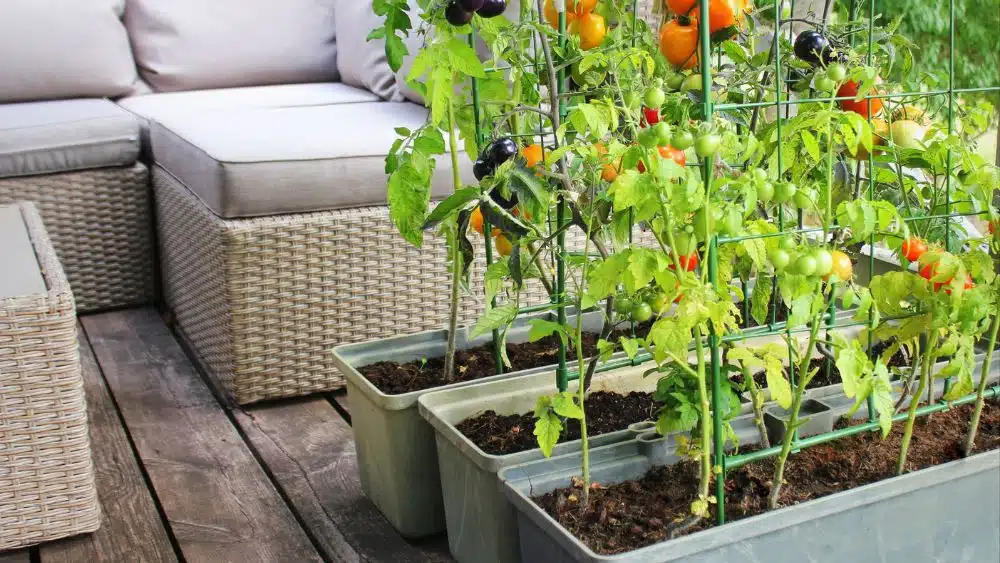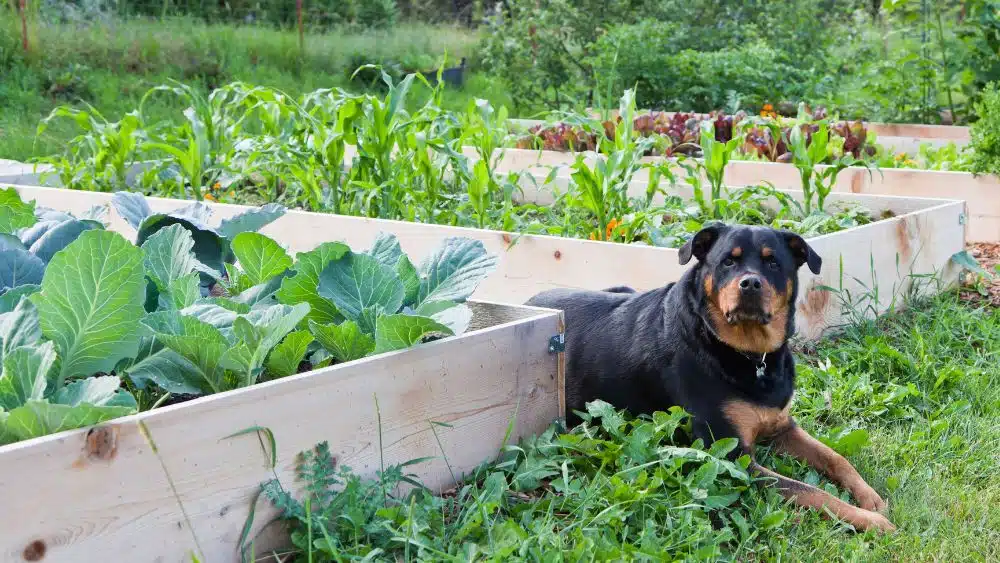Gardening is a fun way for all homeowners to enjoy their yard space. After weeks or months of hauling, unpacking, and organizing, new homebuyers are often excited to spend relaxing time outside in the sunshine preparing their garden for a bright new season.
Before breaking ground, homeowners should decide the method for planting their garden. For homes with large yard spaces, the traditional rows planted in the ground may be suitable. For smaller yards or those in areas with unpredictable weather patterns, the convenience of containers may be a better choice. If you are looking for a hybrid option, you might consider a raised garden bed.
Here are some of the pros and cons of each planting method to consider as you map out your new garden plans.
In-Ground Garden Rows

Planting crops in the ground may appear to be the simplest and most straightforward method for starting your garden. Seemingly the more traditional form of planting, this method has been used for literally thousands of years. Just scoop up several inches of the soil, remove the weeds, rocks, and debris from other plants, and then fill the area with tilled soil and compost to make it plant-ready. Seems easy, right? Unfortunately, it’s not quite that simple.
Pros
In-ground garden rows may be the most cost-effective option, especially if your soil is already very nutrient-rich and viable for new growth. In-ground rows also do not require any additional tools or materials other than a basic shovel and tiller, which can typically be rented from a local hardware store. Even if the soil is garden-ready, it is still best practice to mix in quality compost or other natural fertilizer over time to boost fertility and minimize the depletion of nutrients.
Additionally, in-ground gardens offer a degree of flexibility in size and shape. If you decide to alter the boundaries of the bed each year, modifications are typically easy to make. In-ground beds also typically require less frequent watering due to more water flowing freely through the soil.
Cons
The downsides to an in-ground garden are primarily related to climate concerns and ongoing maintenance. In colder climates, the soil may take longer to thaw, therefore delaying the start of the growing season. In-ground gardens often require very thorough ongoing maintenance as they are more prone to pests, weeds, rocks, and debris. To maintain a clean-cut, aesthetically appealing, and healthy garden, homeowners should expect quite a bit of regular upkeep required.
In-ground gardens may be challenging due to soil issues at the start. Even if the dirt is otherwise healthy and nutrient-rich, the texture and drainage capabilities of your soil may not be in the best shape. Years of the topsoil being stepped on and beaten down by humans, animals, and machines have compacted the soil and made it harder to grow unless you can loosen up the dirt. Tilling, shoveling, and preparing the plot takes a significant amount of physical labor. Additionally, if there are issues with the soil’s fertility, growers may spend more time, effort, and money replenishing the area’s topsoil with compost, fertilizers, and supplements.
Container Gardens

For homeowners with smaller outdoor spaces, only partial sun, or those who want the flexibility to transport their plants as needed, there is a simple solution: container gardens. A favorite among small herb plant growers, pots can be a great way to maintain your plants individually in their own container space and adjust to their needs. Especially in cities where backyard spaces are a rare find, patio tomato plants aren’t the only potted vegetable you’ll see. Homeowners can get creative with their shelving design and setup, often using hanging containers and even a trellis to maximize the space.
Pros
Container gardens easily take home the prize for convenience. They require less start-up and ongoing maintenance than an in-ground garden. Because of their size, it’s easier to keep an eye on weeds and pests. If you notice a plant is getting too much sun, it’s an easy fix to move it to an area with more shade. Vice versa, you can easily move the plants to the sunniest spots without much extra effort. Containers are low commitment and usually quite affordable, so if you just want to try your hand at growing peppers or tomatoes, it’s a low-risk investment to test your green thumb with a container first and see how you like it.
Cons
While certainly more manageable and convenient than an in-ground bed, container gardens still have a few drawbacks. Due to their size, the plants often dry out faster and more frequently, thus requiring intentional and frequent watering. With extra watering comes the flushing of healthy nutrients from the soil that are required for the plants to grow, which then requires more fertilizer to be added to the containers throughout the growing season. By the time the season ends, the soil will most likely be depleted of nutrients and growers will need to replace the potting soil entirely for the next season.
Additionally, container size can limit the growth of your garden plants. If your pots are too small, plants will be restricted and unable to thrive in their full growth stage. If the pots are too big, they may require extra watering and fertilizer to maintain good health.
Raised Garden Beds

Raised garden beds are exactly what they sound like. They are row gardens that sit above ground and are enclosed in a frame of wood, stone, bricks, or concrete that holds fresh, nutrient-rich soil that continues to feed and irrigate your plants. The container is bottomless, so the planting soil mixes freely with the earth and allows for healthy drainage and deep rooting.
Pros
Raised garden beds offer a hybrid between the in-ground rows and container gardens. They minimize issues of water runoff while allowing the plants to grow deeper into the ground. Especially in areas where the soil is not ideal for planting, such as rocky or clay soils, raised beds can offer good quality soil and better-growing conditions. In colder regions, raised beds often allow for longer growing seasons with the use of row covers. After the first season, tilling and extra manual labor shouldn’t be required so long as growers continue to compost and feed the soil to maintain a healthy nutrient level and optimal fertility.
Additionally, raised beds are further from the ground, meaning there is less bending and hunching required when you tend to the garden. With the right enclosure materials, raised beds can be maintained by simply sitting on the sides of the garden to tend to the weeds and harvest your vegetables.
Cons
The biggest downside to a raised garden bed is the startup labor. In the first year, home gardeners should expect a heavy labor load to build the frame, fill it with soil, and prepare it for planting. However, after the first year, the start of the growing season is very simple since the soil doesn’t require fresh tilling or digging. Just like in-ground beds, raised beds require ongoing maintenance throughout the growing season but are somewhat less prone to weeds and pests. Raised beds also offer a little less flexibility in modifications if you choose to change the size or shape of your garden in future years.
Plant Your Garden and Watch It Grow!
Every garden type offers its own unique benefits and drawbacks. Take time to evaluate your space and use this resource to help determine which option is best for you. No matter which method you choose, with a little time, labor, and care, your vegetable garden will be happily blooming in the new season.

Melanie Theriault is a writer, counselor, and lifelong learner. She holds a B.A. in Sociology from Southwestern University, where she discovered her passion for fostering human connection through storytelling.
 The Complete Guide to Home Demolition
The Complete Guide to Home Demolition